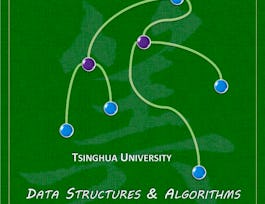I/O-efficient algorithms, also known as external memory algorithms or cache-oblivious algorithms, are a class of algorithms designed to efficiently process data that is too large to fit entirely in the main memory (RAM) of a computer. These algorithms are particularly useful when dealing with massive datasets, such as those found in large-scale data processing, database management, and file systems.



I/O-efficient algorithms

Instructor: Mark de Berg
Sponsored by Syrian Youth Assembly
8,201 already enrolled
(60 reviews)
Details to know

Add to your LinkedIn profile
6 assignments
See how employees at top companies are mastering in-demand skills


Earn a career certificate
Add this credential to your LinkedIn profile, resume, or CV
Share it on social media and in your performance review

There are 6 modules in this course
In this module we give an introduction to the course I/O-efficient algorithms. We discuss the so-called I/O-model, which consists of an internal memory of limited size, an external memory of unlimited size and where data transfer between these two happens in blocks of a given size. We give a simple example showing that the actual running time of an algorithm working on data in external memory is greatly influenced by its I/O-behavior. Finally, we discuss the basics of analyzing algorithms in the I/O-model.
What's included
5 videos1 reading1 assignment
In this module we discuss two techniques to design I/O-efficient algorithms, using the matrix-transposition problem as a running example. The first technique is a "tile-based" approach and leads to a cache-aware algorithm. The second technique uses a recursive approach and leads to a cache-oblivious algorithm.
What's included
3 videos1 reading1 assignment
When we want to read something from external memory while the internal memory is full we need to make room by evicting a block from internal memory. The block which should be evicted is decided by the replacement policy. In this module we introduce LRU and some other some well-known replacement policies, and investigate the I/O-efficiency of LRU compared to an optimal replacement policy.
What's included
1 video1 reading1 assignment
In this module we analyze the I/O-efficiency of MergeSort and discuss how to adapt it to make it more I/O-efficient.
What's included
2 videos1 reading1 assignment
In this module we introduce some I/O-efficient data structures: B-trees and buffer trees, and an I/O-efficient priority queue based on buffer trees.
What's included
3 videos1 reading1 assignment
In this module we discuss time-forward processing, a technique that can be used to evaluate so-called local functions on a directed acyclic graph.
What's included
4 videos1 reading1 assignment
Instructor

Offered by
Why people choose Coursera for their career




Learner reviews
60 reviews
- 5 stars
70%
- 4 stars
23.33%
- 3 stars
5%
- 2 stars
1.66%
- 1 star
0%
Showing 3 of 60
Reviewed on Nov 5, 2019
Everything was clearly explained and the questions were quite intuitive and checking my knowledge. More examples for different scenarios too would help us a lot to learn more.
Reviewed on May 16, 2024
Excellent course. The lectures are of top quality. The quizzes are well thought out.
Reviewed on Feb 28, 2022
The excercises and assignments helped in undertanding the concepts much better. Also as this course content can't be found easily at one place this really helped. Thank you
Recommended if you're interested in Computer Science

Stanford University

Rice University

Tsinghua University

University of Colorado Boulder

Open new doors with Coursera Plus
Unlimited access to 10,000+ world-class courses, hands-on projects, and job-ready certificate programs - all included in your subscription
Advance your career with an online degree
Earn a degree from world-class universities - 100% online
Join over 3,400 global companies that choose Coursera for Business
Upskill your employees to excel in the digital economy


